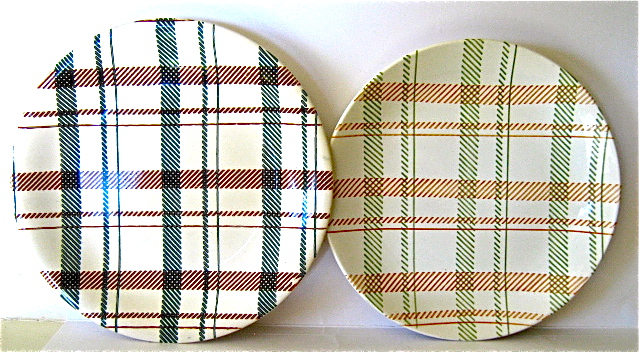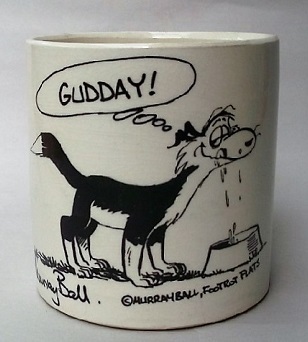Latest topics
Two Tartans from different Clans
2 posters
Page 1 of 1
 Two Tartans from different Clans
Two Tartans from different Clans
Spotted this the other day and spent up large to be able to compare (50c)
Exactly the same design in a different colour tone. Did the bright New Zealand Sun fade the colours??






Exactly the same design in a different colour tone. Did the bright New Zealand Sun fade the colours??




Jonno- Number of posts : 662
Location : Milford,Auckland
Registration date : 2011-05-13
 Re: Two Tartans from different Clans
Re: Two Tartans from different Clans
Hi Ev,
No I think that both plates have been printed by one of the plate printing techniques
that were used by Crown Lynn in New Zealand and obviously Johnson's in England.
No I think that both plates have been printed by one of the plate printing techniques
that were used by Crown Lynn in New Zealand and obviously Johnson's in England.

Jonno- Number of posts : 662
Location : Milford,Auckland
Registration date : 2011-05-13
 Re: Two Tartans from different Clans
Re: Two Tartans from different Clans
Do you mean the Murray Curvex machine?
I need lessons on what that machine could do, as I thought it must have been involved with the Earthstone range, but it doesn't look like it was.
I need lessons on what that machine could do, as I thought it must have been involved with the Earthstone range, but it doesn't look like it was.
 Re: Two Tartans from different Clans
Re: Two Tartans from different Clans
Yes I think Murray-Curvex could have been the machine that was used. I have rather vague memories of seeing it being used at Crown Lynn and the design was transferred from the inked printing plate to a rubber hemisphere which then rotated and pressed down onto the bisque plate which the operator had placed in position after removing the previously printed plate. In this Roydon design there are two colours so each plate would have been printed twice the first colour being the Orange.
If you look at the print with a strong glass you can see the typical slightly uneven print of colour caused by the use of the flexible rubber hemisphere at the same time it is clear that this is a solid or line print not a half-tone as would be the case with a litho printed transfer.
I recall when first sighting the machine in operation it looked very much as though the bisque plate would be broken as this big half ball came down onto it.
Hope this makes sense?
Here is some more info which may help
http://www.thepotteries.org/walks/burgess/36.htm
If you look at the print with a strong glass you can see the typical slightly uneven print of colour caused by the use of the flexible rubber hemisphere at the same time it is clear that this is a solid or line print not a half-tone as would be the case with a litho printed transfer.
I recall when first sighting the machine in operation it looked very much as though the bisque plate would be broken as this big half ball came down onto it.
Hope this makes sense?
Here is some more info which may help
http://www.thepotteries.org/walks/burgess/36.htm
Last edited by Jonno on Tue 12 Feb - 22:29; edited 1 time in total (Reason for editing : Add word)

Jonno- Number of posts : 662
Location : Milford,Auckland
Registration date : 2011-05-13
Page 1 of 1
Permissions in this forum:
You cannot reply to topics in this forum
» B. Jarvie, Waiomu, Thames
» Sherwood Round Sundial
» Please can someone identify this mark.
» Steenstra Brick Clay Vase ..
» Steenstra Vase with decals
» Steenstra Brick Clay Vase being used for the first time!
» Kermiko Vase in pastel green
» Temuka hand painted fun bowl.